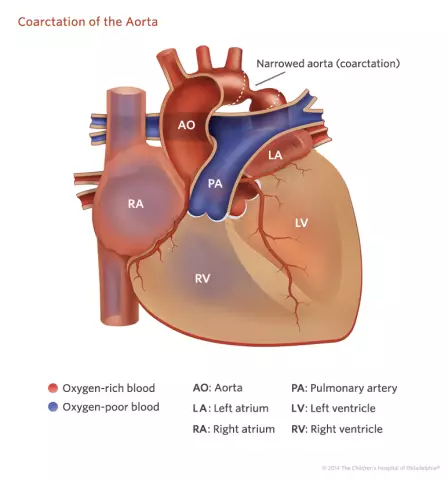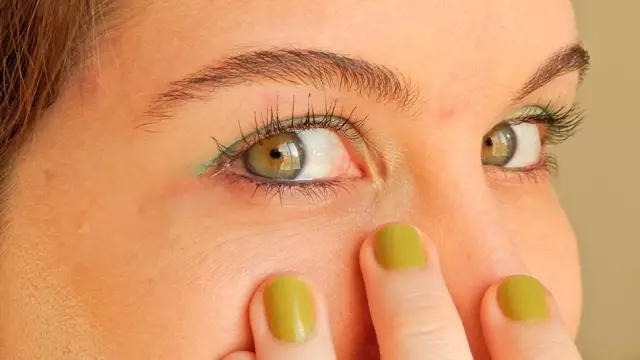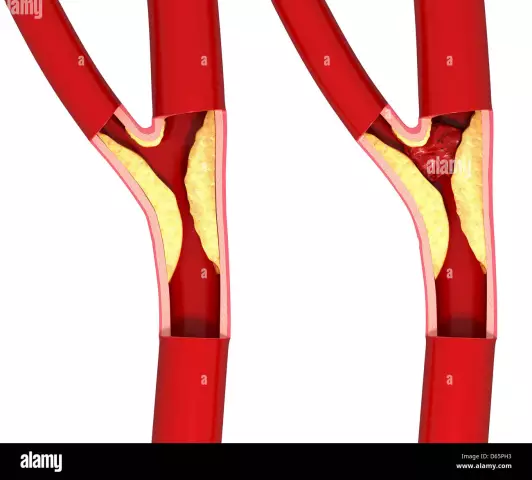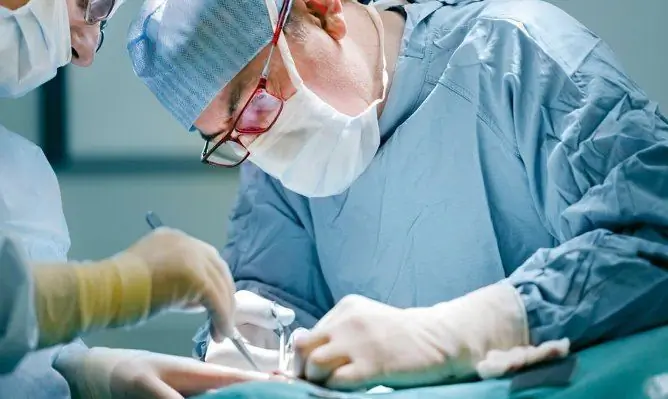- Author Rachel Wainwright [email protected].
- Public 2023-12-15 07:39.
- Last modified 2025-11-02 20:14.
Coarctation of the aorta

Coarctation of the aorta is a narrowing of the part of the aorta - the main artery that exits the heart. The term "coarctation" means a narrowing of the lumen size. This disease is congenital.
Through the aorta from the heart, blood flows to all other vessels, which supply the tissues and organs of the body with the necessary substances and oxygen. When part of this structure is constricted, blood flow is difficult.
Causes of coarctation of the aorta
The cause of coarctation of the aorta is disturbances in the formation of the aorta during intrauterine development of the fetus. The aorta narrows, mainly juxtaductally (near the ductus arteriosus). The arterial duct connects the left pulmonary artery and the aorta and performs its functions only inside the womb, and at the beginning of alveolar breathing it immediately closes. It is during the fetal period that part of the flowing tissues passes to the aorta and also closes the wall, which, accordingly, contributes to the narrowing.
In more rare cases, coarctation of the aorta can be caused by Takayasu syndrome, trauma or damage to the aorta of an atherosclerotic nature, due to which coarctation of the aorta can occur throughout life.
Risk factors
Genetically predisposed to coarctation of the aorta are people with Shereshevsky-Turner syndrome, who have 45 chromosomes instead of 46.10% of patients with this syndrome have coarctation of the aorta.
Coarctation of the aorta can be combined with other congenital heart defects:
• Bicuspid aortic valve. The aortic valve serves to separate the aorta from the left ventricle. During normal development, it has three valves;
• Defect of the interventricular septum. With this defect, there is a message between the left and right ventricles, due to which the blood from the left ventricle, containing oxygen, mixes with the venous blood in the right ventricle;
• Open arterial duct. The ductus arteriosus should normally close immediately after the baby is born;
• Stenosis of the opening of the mitral or aortic valves. With this defect, these holes are narrowed.
Symptoms of aortic coarctation
The symptoms of coarctation of the aorta depend on the amount of blood that can pass through the narrowed section of the main artery in a certain amount of time. Additional defects in the cardiovascular system can aggravate the situation.
Coarctation of the aorta in children in 50% of cases is noted already from birth. In other cases, symptoms of coarctation of the aorta occur in adolescence.
The symptoms of aortic coarctation are:
• shortness of breath;
• fainting and dizziness;
• headache;
• chest pain;
• constantly cold feet and legs;
• bleeding from the nose;
• leg cramps during exercise;
• hypertension (high blood pressure) during exercise;
• rapid fatigue during exercise;
• short stature;
• developmental delays.
Sometimes symptoms may be completely absent.
Diagnosis of aortic coarctation
For instrumental research use:
• Chest X-ray;
• Echocardiography;
• Electrocardiography;
• Magnetic resonance imaging.
Complications
If you do not treat aortic coarctation in children, over time may develop:
• Stroke;
• Rupture of the aorta;
• Diseases of the coronary arteries;

• Vascular aneurysm in the brain.
It is worth noting that with coarctation of the aorta, the internal organs are poorly supplied with blood, therefore, degenerative changes in the organs may gradually develop with subsequent dysfunctions of their functions.
Treatment of aortic coarctation
In most cases, aortic coarctation in children is treated with surgery immediately after birth or over time. Before such operations, stabilizing drugs are prescribed for coarctation of the aorta.
Children who have coarctation of the aorta at an older age are also treated with surgery. In most cases, they do not have very pronounced symptoms, so there is an opportunity to prepare well for surgery for coarctation of the aorta.
Treatment for coarctation of the aorta is to remove or open the narrowed part of the aorta. If the narrowed part is small, it is removed, and the remaining ends of the aorta are connected to each other. This surgery is called anastomosis. If the narrowed part of the aorta is large, Dacron graft is used. The defect is filled in and the two parts of the aorta are connected.
In the postoperative period, high blood pressure may still be observed, therefore, you may have to use antihypertensive drugs. There are cases when, after several years after the operation, enlargements of the reconstructed area appear or it narrows again, therefore, it may be necessary to re-operate.
If your family has had cases of coarctation of the aorta, it is advisable to undergo medical genetic counseling and identify how high the risk of developing coarctation of the aorta is in your children.
YouTube video related to the article:
The information is generalized and provided for informational purposes only. At the first sign of illness, see your doctor. Self-medication is hazardous to health!






